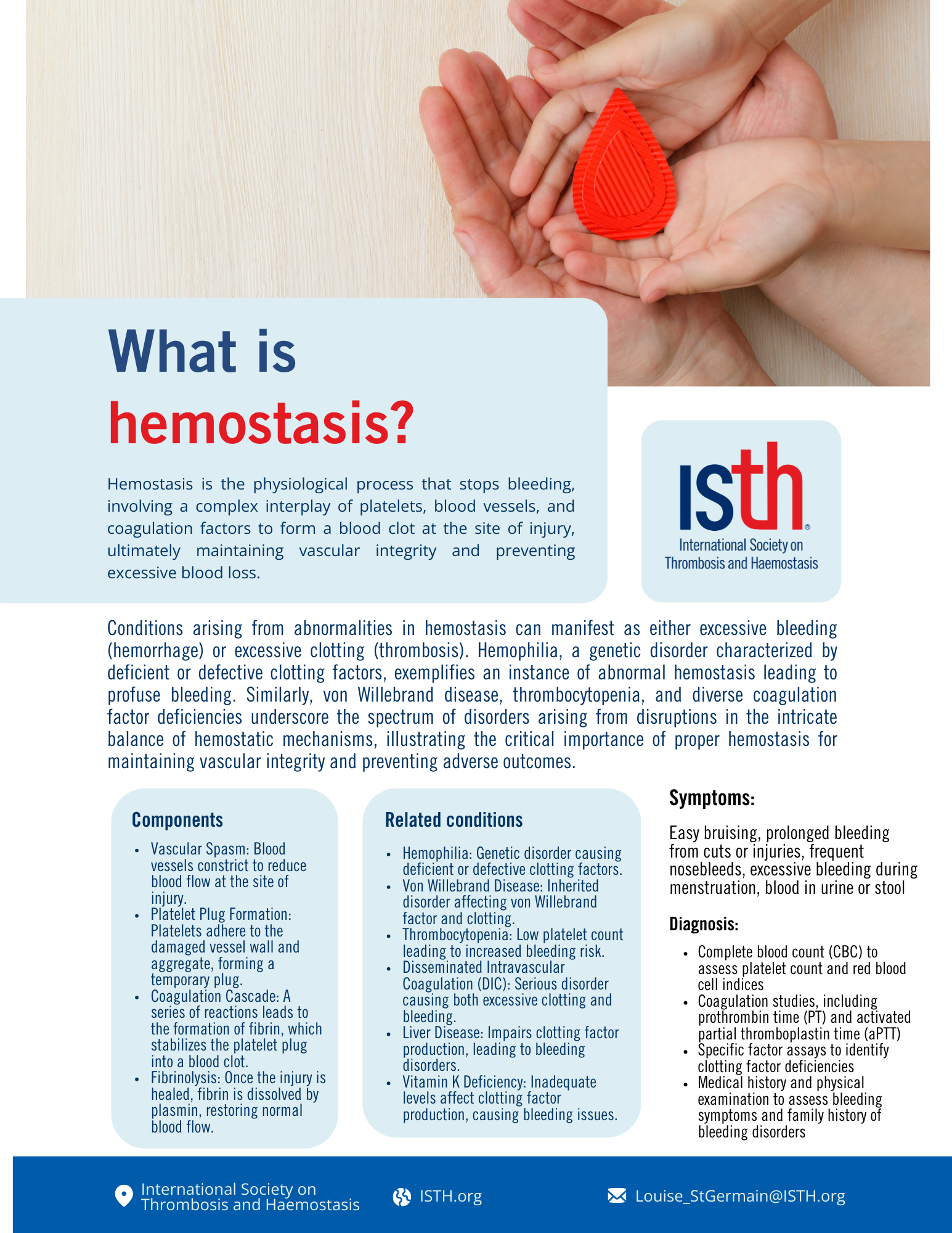World Diabetes Foundation
Leveraging Health Literacy and Self-Care to Tackle Diabetes
Article
27 Aug 2025

Hemostasis is the physiological process that stops bleeding, involving a complex interplay of platelets, blood vessels, and coagulation factors to form a blood clot at the site of injury, ultimately maintaining vascular integrity and preventing excessive blood loss.
Conditions arising from abnormalities in hemostasis can manifest as either excessive bleeding (hemorrhage) or excessive clotting (thrombosis). Hemophilia, a genetic disorder characterized by deficient or defective clotting factors, exemplifies an instance of abnormal hemostasis leading to profuse bleeding. Similarly, von Willebrand disease, thrombocytopenia, and diverse coagulation factor deficiencies underscore the spectrum of disorders arising from disruptions in the intricate balance of hemostatic mechanisms, illustrating the critical importance of proper hemostasis for maintaining vascular integrity and preventing adverse outcomes.
A basic flyer explaining hemostasis serves as an invaluable educational tool, providing accessible information about the body's intricate mechanism for stopping bleeding. Understanding hemostasis is crucial for individuals to recognize and manage bleeding disorders effectively. By outlining the key components and processes involved in hemostasis, the flyer empowers readers to recognize signs of abnormal bleeding and seek appropriate medical care. Moreover, it emphasizes the importance of reliable resources for accurate information. The International Society on Thrombosis and Haemostasis (ISTH) stands as a leading authority in this field, offering comprehensive resources and expertise to both healthcare professionals and the public. Through its wealth of research, guidelines, and educational materials, the ISTH serves as a trusted source for understanding hemostasis and related conditions, ensuring informed decision-making and optimal patient care. Access to such credible resources enhances public awareness, facilitates early detection of bleeding disorders, and ultimately improves outcomes for individuals affected by these conditions.